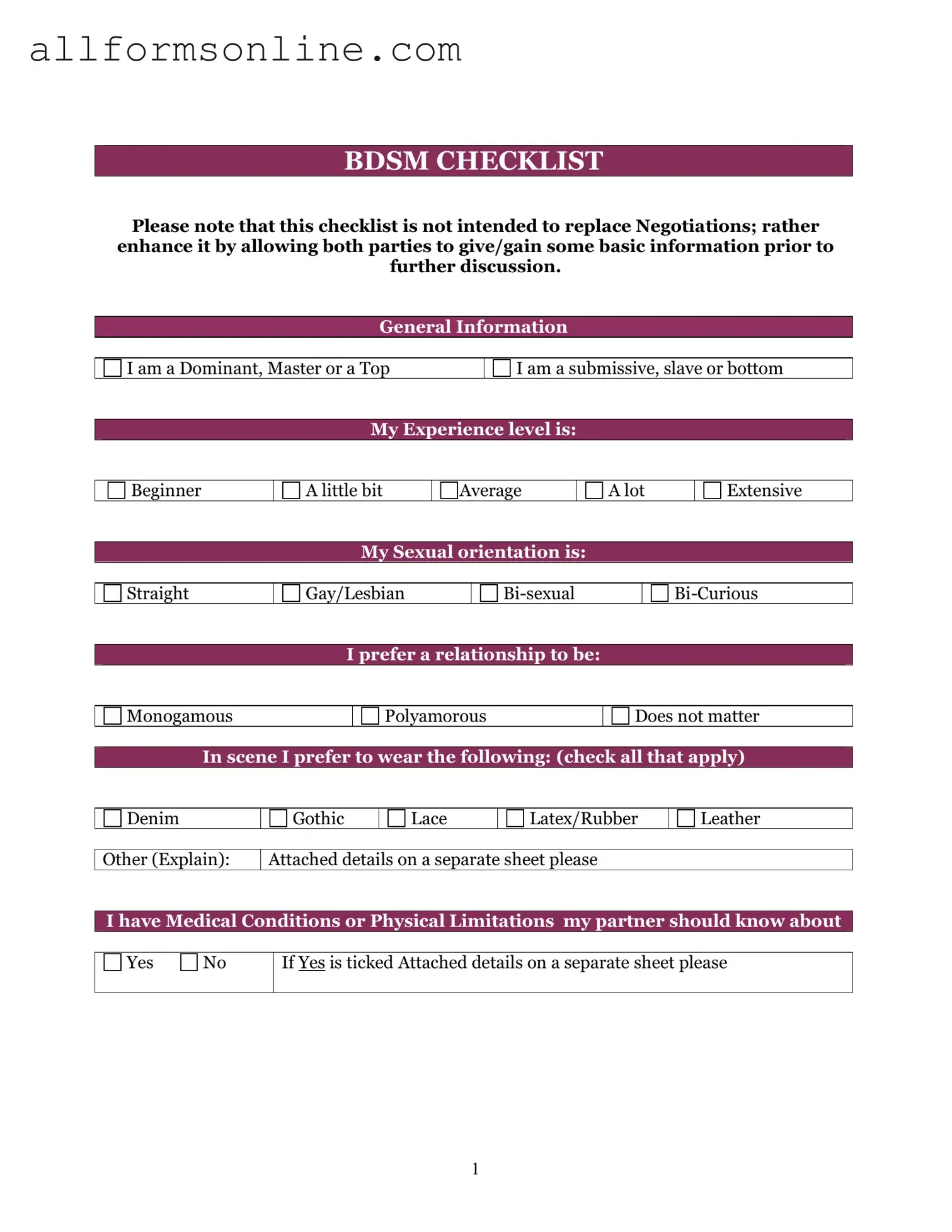What is the BDSM Checklist form?
The BDSM Checklist form is a tool designed to help individuals and partners communicate their preferences, limits, and interests in BDSM activities. It serves as a guide for discussions about desires and boundaries, ensuring that everyone involved is on the same page. This checklist can help foster a safe and consensual environment for exploring BDSM practices.
How do I use the BDSM Checklist form?
To use the BDSM Checklist form, start by reviewing the different activities and interests listed. Each participant should mark their preferences, indicating what they are interested in trying, what they are unsure about, and what they absolutely do not want to engage in. After completing the checklist, take time to discuss the results with your partner. This conversation can help clarify boundaries and establish consent for any activities you both wish to explore.
Is the BDSM Checklist form only for experienced practitioners?
No, the BDSM Checklist form is suitable for individuals at all experience levels. Whether you are new to BDSM or have been practicing for years, the checklist can help facilitate important conversations about safety and consent. It’s a valuable resource for both beginners and seasoned practitioners to ensure that everyone feels comfortable and respected in their exploration.
What should I do if my partner has different interests?
It’s natural for partners to have different interests and boundaries. If you find that your preferences don’t align, approach the conversation with openness and respect. Discuss each other's feelings and concerns. You might discover activities that both of you are comfortable exploring together. Remember, consent and communication are key in any relationship, especially in BDSM.
Can I update my BDSM Checklist form over time?
What if I feel uncomfortable discussing my checklist?
Feeling uncomfortable is completely normal, especially when discussing intimate topics. If you find it difficult to talk about your checklist, consider writing down your thoughts first. You can also choose to discuss the checklist in a relaxed environment where you both feel safe. Remember, the goal is to create an open dialogue, and it’s okay to take your time in addressing your feelings and concerns.
